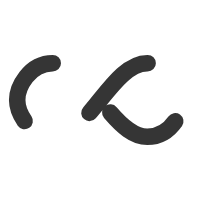

Futures contracts are among the most pivotal financial instruments used by traders to hedge against risk or speculate on future price movements of various assets. Understanding these instruments is crucial for anyone looking to navigate the financial markets effectively. This comprehensive guide will delve into the intricacies of futures contracts, covering key concepts such as contract specifications, expiration dates, margin requirements, and settlement procedures. We will also compare futures with other derivatives like options and discuss the various types of futures contracts available across different asset classes. Additionally, we’ll provide practical examples and strategies for traders aiming to incorporate futures trading into their investment portfolios.
What Are Futures Contracts?
A futures contract is a standardized legal agreement to buy or sell something at a predetermined price at a specified time in the future. The underlying asset could be commodities, stocks, bonds, or currencies. Originally developed by farmers and commodity producers to hedge against price fluctuations, futures contracts have evolved into complex financial instruments that serve various purposes in today’s markets, including risk management, speculation, and arbitrage.
Historical Context
The concept of futures trading dates back to the 17th century in Japan, where rice traders used similar contracts for their crops. Modern futures markets developed in the mid-19th century in the United States, beginning with the Chicago Board of Trade (CBOT) in 1848, focusing primarily on agricultural commodities. Over time, the market expanded to include financial instruments, dramatically increasing the scope and scale of futures trading.
Role in Markets
Futures contracts are primarily used for hedging risk and speculating on the price movements of an asset. Hedgers use these contracts to lock in prices to stabilize revenues or costs, while speculators take on risk from the hedgers in hopes of making a profit on price changes.
Key Features of Futures Contracts
Contract Specifications
Each futures contract has specific details that define the terms of the agreement:
Expiration Dates
Futures contracts are time-bound agreements with specified expiration dates, typically monthly or quarterly. The expiration date is crucial as it affects a trader’s strategy, particularly for those who do not wish to take physical delivery of the commodity but rather settle their positions beforehand.
Margin Requirements
To enter into a futures contract, traders must deposit a “margin” – a fraction of the total contract value – with a brokerage. Margins are divided into two types:
Settlement Procedures
Futures can settle in two ways:
Differences Between Futures and Other Derivatives
Comparison with Options
While both options and futures are derivatives, crucial differences exist:
Swaps and Forwards
Swaps and forwards are other forms of derivatives:
Types of Futures Contracts
Commodity Futures
These contracts involve physical commodities like oil, gold, or agricultural products. They are vital for producers and marketers as they provide a hedge against price volatility.
Financial Futures
These include futures contracts on financial variables like interest rates, stock indices, or currencies. They are used by financial institutions to hedge against changes in market indices and interest rates.
Cryptocurrency Futures
A newer addition to the futures market, cryptocurrency futures, allow traders to speculate on the future price of cryptocurrencies like Bitcoin or Ethereum without directly holding the digital currency.
Trading Strategies Using Futures
Basic Strategies
Advanced Strategies
Managing Risks in Futures Trading
Leverage in futures trading can amplify profits but also losses. Effective risk management techniques include using stop-loss orders and maintaining adequate margin levels to avoid margin calls.
Conclusion
Futures contracts are a cornerstone of modern financial markets, providing flexibility and opportunities for traders to hedge, speculate, and diversify their investments. Understanding these instruments and their features, as well as the strategies to employ them effectively, can significantly enhance a trader’s ability to succeed in the market. As the markets evolve, so too should the strategies of traders, who must continually adapt to new regulations, technologies, and financial instruments.
For cutting-edge analysis and tips delivered straight to your inbox. Join our community of savvy traders today and stay ahead of the market trends.
